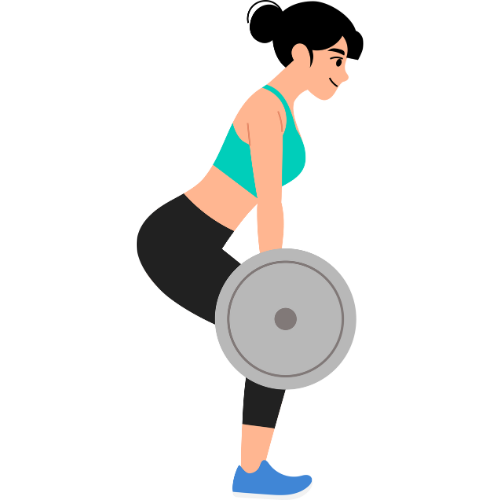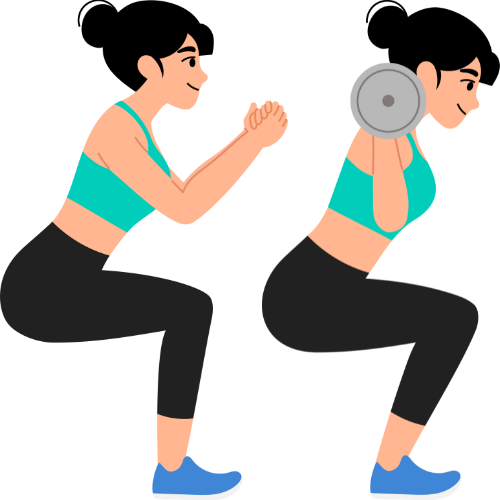Let’s be real: building strong, shapely glutes isn’t just about looking good in your favorite pair of jeans—it’s about functional strength, better posture, and even injury prevention. But with so many glute exercises out there, how do you know which ones actually work? Spoiler alert: not all exercises are created equal.
Luckily, science has our back (or, well, our butt). Research using electromyography (EMG) and hypertrophy studies has identified the most effective exercises for glute growth. So, if you’re ready to level up your glute game, let’s dive into the best exercises to grow glutes fast, backed by research.
Why Glute Activation Matters
Before we get into the nitty-gritty, let’s talk about why glute activation is so important. Your glutes are the largest muscle group in your body, but they’re also notoriously lazy. Many of us sit all day, which can lead to underactive glutes—a phenomenon often referred to as “gluteal amnesia.”
When your glutes aren’t firing properly, other muscles (like your hamstrings and lower back) have to pick up the slack. This can lead to poor posture, lower back pain, and even injuries. That’s why choosing exercises that maximize glute activation is key.
According to EMG research, the best glute exercises are those that:
- Target the gluteus maximus (the largest muscle in your glutes) through full hip extension.
- Incorporate single-leg movements, which often activate the glutes more than bilateral exercises.
- Focus on mind-muscle connection, which can improve glute activation by up to 22%.
Now, let’s break down the top exercises that check all these boxes.
Top 5 Glute-Building Exercises

1. Step-Up Variations
Step-ups are the unsung heroes of glute training. Research shows they elicit 169% MVIC (maximum voluntary contraction)—the highest glute activation of any exercise.
- Key variations: Standard, lateral, diagonal, and crossover step-ups.
- Why they work: They target the gluteus maximus through full hip extension.
- Pro tip: Use a knee-height box and focus on driving through your heel to maximize glute engagement.
2. Barbell Hip Thrusts

Hip thrusts are a fan favorite for a reason. A 10-week study showed they led to significant glute hypertrophy when added to a training program.
- Activation: Produces 86% MVIC, even with lighter loads.
- Optimal form: Feet shoulder-width apart, toes angled 30° outward, and squeeze your glutes at the top without hyperextending your lower back.
3. Split Squats (Bulgarian & Traditional)

Split squats are a powerhouse for glute activation, with EMG data showing 70-86% MVIC.
- Why they’re superior: They outperform bilateral squats for glute focus.
- Pro tip: Lean your torso slightly forward to increase glute engagement.
4. Deadlift Variations

Deadlifts are a classic for a reason. They’re one of the most effective exercises for building overall strength, and they’re also great for your glutes.
- Best variations: Conventional deadlifts, trap bar deadlifts (great for beginners), and stiff-leg deadlifts (emphasizes the posterior chain).
5. Squat Variations

Squats are a staple in any glute workout routine, but not all squats are created equal.
- Best options: Back squats below parallel, front squats (more upright torso = greater glute demand), and belt squats (reduce spinal loading).
Glute Workout Routine: How to Structure Your Training
Now that you know the best exercises, let’s talk about how to put them together into an effective glute workout routine.
| Exercise Category | Sets/Week | Key Exercises |
| Vertical Extension | 12+ | Squats, lunges |
| Horizontal Extension | 12+ | Hip thrusts, glute bridges |
| Abduction | 12+ | Side-lying raises, clamshells |
Progression tips:
- Start with 3-4 sets of 8-12 reps per exercise.
- Add 2.5-5% load weekly.
- Use a 2:0:1 tempo (eccentric:pause:concentric ) for time under tension.
Key Research Findings
Here’s what the science says about growing your glutes:
- Hip thrusts increased glute size 18% more than squats and deadlifts alone in a 10-week study.
- Single-leg exercises show 23-41% greater glute activation compared to bilateral movements.
- Step-ups activate glutes 2.5x more than traditional squats.
- Mind-muscle connection improves glute activation by 22% during compound lifts.
Practical Tips for Maximizing Glute Growth
1. Focus on Full Range of Motion
One of the biggest mistakes people make is not using a full range of motion. For example, when doing squats, make sure you’re going below parallel to fully stretch and activate your glutes.
2. Incorporate Progressive Overload
To see continuous growth, you need to progressively increase the load or intensity of your workouts. This could mean adding more weight, increasing the number of reps, or reducing rest time between sets.
3. Don’t Neglect Glute Activation Exercises
Before jumping into heavy lifting, it’s a good idea to do some glute activation exercises to “wake up” your glutes. Some great options include glute bridges, clamshells, and banded lateral walks.
4. Prioritize Recovery
Your muscles grow when you’re resting, not when you’re working out. Make sure you’re getting enough sleep, eating a balanced diet, and taking rest days to allow your muscles to recover.
Common Mistakes to Avoid
1. Relying Too Much on Machines
While machines like the leg press can be useful, they often don’t provide the same level of glute activation as free-weight exercises.
2. Ignoring the Mind-Muscle Connection
It’s not just about moving the weight—it’s about feeling your glutes do the work. Focus on squeezing your glutes at the top of each movement.
3. Overtraining
While it’s important to train your glutes regularly, overtraining can lead to burnout and even injury. Aim for 2-3 glute-focused workouts per week.
The Role of Nutrition in Glute Growth
No matter how hard you train, you won’t see optimal results without proper nutrition. Here are some key tips:
- Protein: Aim for 0.8-1 gram of protein per pound of body weight to support muscle growth.
- Carbs: Don’t fear carbs—they’re essential for fueling your workouts and aiding recovery.
- Fats: Healthy fats are important for hormone production, which plays a key role in muscle growth.
Building strong, well-developed glutes isn’t just about aesthetics—it’s about functional strength and overall health. By incorporating these evidence-based exercises into your glute workout routine, you’ll be well on your way to achieving your goals.
Remember, consistency is key. Focus on progressive overload, proper form, and mind-muscle connection. And don’t forget to fuel your body with adequate protein to support muscle growth.
So, what are you waiting for? It’s time to activate those glutes and get to work!
References:
- Best Glute Exercises for Maximum Activation
- EMG Data on Glute Activation
- Hip Thrusts vs. Squats for Glute Growth
- Step-Ups: The Ultimate Glute Exercise
Let’s get those glutes growing!


